|
|
Princess Elizabeth Bagaya of Toro
TPB Note: My contemporary at Cambridge, and briefly a friend!
|
|
Vintage Muse du Jour: Princess Elizabeth of Toro
|
|
Most of the planet is still talking about the British Royal Wedding at Windsor Castle, but today, we’re formally inviting you to shift your gaze to a lesser-known royal, deserving of her own spotlight: Elizabeth of Toro, the Ugandan Princess, lawyer, actor, top model, Minister of Foreign Affairs and Ambassador to the US, Germany and the Vatican in the 1960s. Her life reads like a trophy wall, and that’s only half of it. The Cambridge graduate was the first female East African to be admitted to the English Bar and later worked for, then escaped, Ugandan dictator, Idi Amin. She’s survived a brutal regimes, periods of exile and prejudice, and simply just isn’t you run-of-the-mill maiden. She’s our Vintage Muse du Jour…
|

|

|
|
She was born Elizabeth Christobel Edith Bagaaya Akiiki of Toro in 1936, a princess in one of the five, 15th century-old kingdoms on the Ugandan border. The kingdom, which is actually called, “Tooro,” was affiliated with ancient Egyptian rule and practices; subjects buried their royals in the same way one would an Egyptian Pharaoh.
|

|
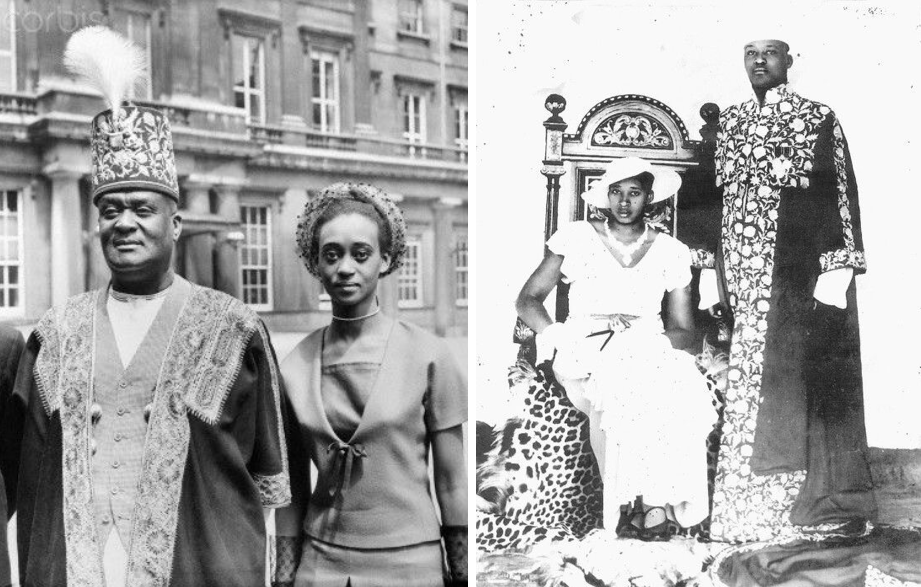
|
|
Here she is with her father (left image), George Rukidi, the “Omukama” or King. On the right is her mother, Queen Kezia, yet another woman of staunch character and chief advisor to her husband.
|
|
Tooro was still under rule of the British Empire — a reality that was a real two-sided coin for the Princess. On the one hand, Elizabeth had access to an excellent education; on the other, she felt as if she had to consistently prove herself to those in the upper crust schools. “I felt that I was on trial,” she later said, “and that my failure to excel would reflect badly on the entire black race.” One year later, she was admitted to the prestigious University of Cambridge to study law.
|
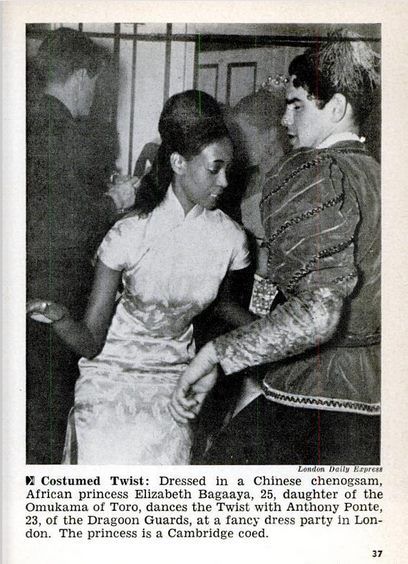
AT A PARTY.
|
|
(TPB Note: This is the young lady I took to the Sidney Sussex May Ball at Cambridge in 1960. I knew her through her brother who was in my college while she was at Girton! We were both in our first year at Cambridge!. That was almost 60 years ago!)
|

|
|
It would be the start of a long career for Elizabeth, who was the first East African woman to be admitted to the English bar and went on to have an illustrious career in politics within, and outside of, her own kingdom.
|
|
Once her father passed away, she explained in her autobiography, “I was the chief adviser to my brother, the King of Toro.” It was her word, in a way, that most resonated in the King’s ear…
|
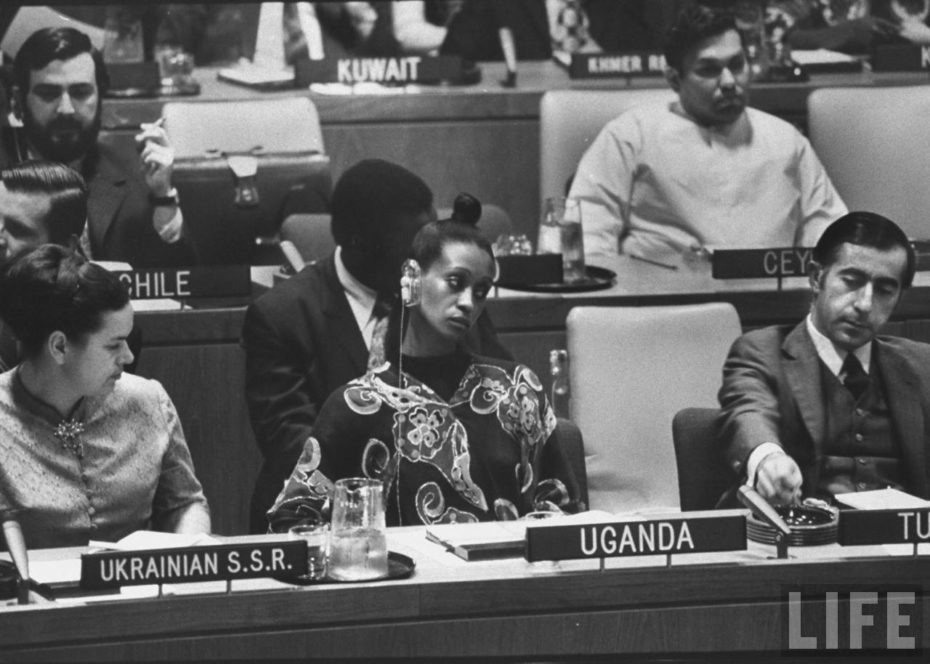
|
|
It was also a very tumultuous period for Tooro, whose monarchy was abolished in 1967 and wouldn’t be reinstated until the early ’90s. It was Princess Margaret, a friend of the Ugandan Princess, who jumped in to effectively save her from becoming a prisoner in her own land. Margaret, being the coolest one in the Royal Family (let’s be honest) flew her in for a fashion show in London in a gesture of solidarity, and a nudge towards another fun past-time for the Princess: high fashion.
|
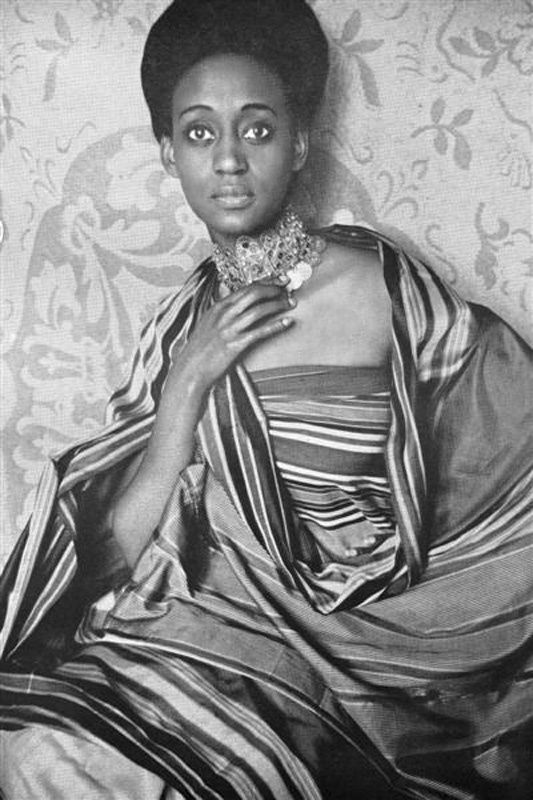
|
|
Elizabeth was instant hit, and even caught the eye of Jackie Kennedy Onassis, who convinced her to move to move to New York for a spill. “I was featured in American Vogue, LIFE and Ebony and I was the first Black to appear on the cover of Harper’s Bazaar,” she wrote, “I have always been a symbol of what a black person can be in any field.”
|

|
|
(LEFT) THE FAMOUS HARPER’S COVER.
|

|

|
|
VOGUE, 1967.
|

|
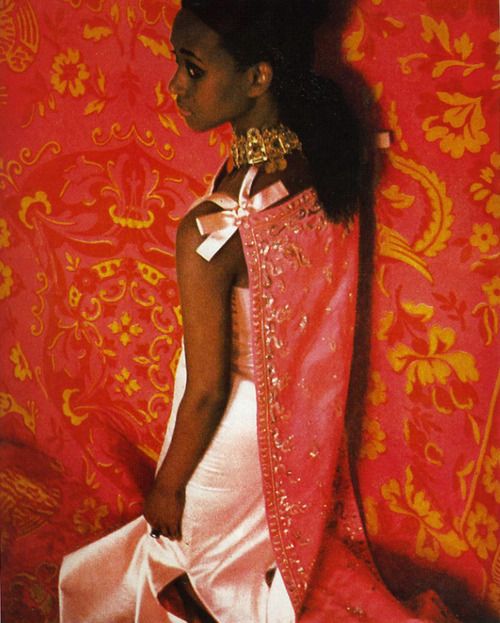
|

|

|
She also starred in the film adaptation of author Chinua Achebe’s classics, Things Fall Apart and No Longer at Ease. The movie was “based on igboland, a region of eastern Nigeria,” explained Elizabeth, and “meant to expose the impact of Western civilisation on Africa.” She was on top of the world — but her homeland was at its own political boiling point.
By the 1970s, the late dictator Idi Amin, “The Hitler of Africa,” had taken complete control of the country. He demanded that all Ugandans with Asian ancestry (about 60,000 people) leave their homeland in 90s days, ruling through violence, greed, and above all, instilling fear in his citizens. He offered Elizabeth a position as Minister of Foreign affairs, and let’s just say that when a dictator ‘offers’ you a role…well, you can’t really refuse. It was a harrowing period in the Princess’ life, and one that demanded a serious blend of smarts and social tact. It was a question of survival, but when she refused to marry Amin, she was fired.
|
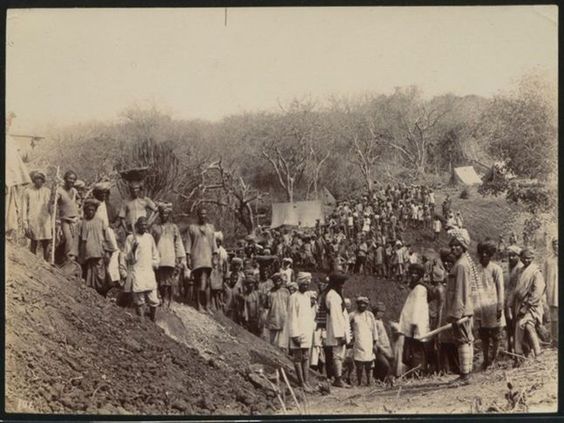
|
|
“Some people who had been eyeing my post told Idi Amin that I was plotting to over-throw him,” she wrote, “and he had me placed under house arrest. But for international and local pressure, I would have been killed. I managed to flee into exile, only to return to Uganda in 1980.”
|

|

|
|
To this day, she remains an icon and inspiration to her people — but her story is still overlooked. “I wish to see Africa working towards the achievement of a real and authentic African identity,” she wrote about her work in politics, “as well as developing ways to ensure that our cultures and values are well promoted and protected. There should be a proper knowledge and documentation of our history, tradition and art, through which other people could learn and appreciate our concept of living.” Now that’s the kind of majesty that doesn’t need a title.
|
|
You can purchase her autobiography here.
|
|
PRINCESS ELIZABETH OF TORO: THE FIRST AFRICAN AND ROYAL TO BE AN INTERNATIONAL SUPERMODEL
|
|
Princess Elizabeth Christobel Edith Bagaaya Akiiki of Toro is the Batebe or princess of the Kingdom of Toro. She is a Ugandan lawyer, politician, diplomat, model and actress. She was the first female East African to be admitted to the English Bar. She is a paternal aunt of the current King of Toro, Oyo Nyimba Kabamba Iguru Rukidi IV. She briefly (February 1974 - November 1974) served as Minister of Foreign Affairs under Idi Amin.
|
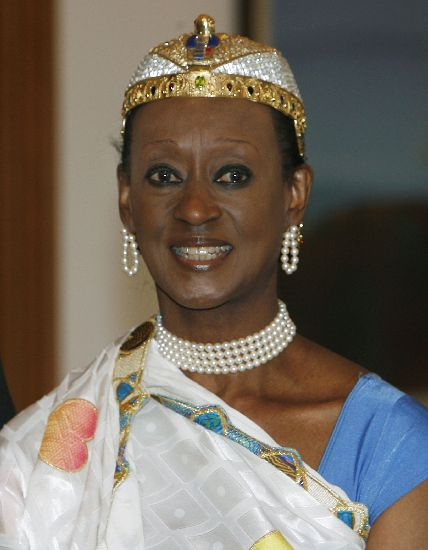
Princess Elizabeth of Toro
|
|
The first Africans began to break into fashion in the USA in the late 1960s, on the back of the gains made by the civil rights movement, which had simultaneously ushered in the first famous African American supermodels, Donyale Luna and Naomi Sims. While the African American beauties were essentially working class girls made good, by contrast the first Africans were the well-to-do daughters of kings and diplomats, who were educated and well travelled. Yahne Sangare was a Liberian diplomat’s daughter, who combined modelling with a post as a news correspondent for the United Nations. She had studied at the Sorbonne in France, and attended finishing school in Switzerland.
|
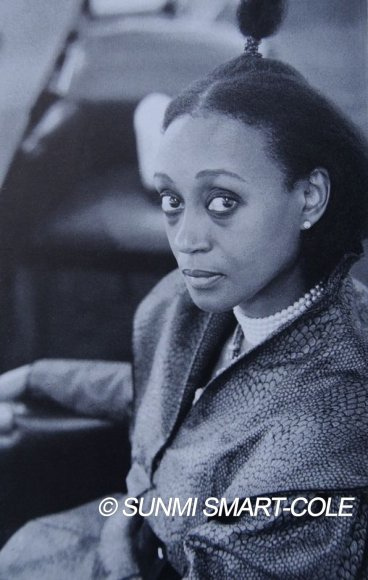
Young princess Elizabeth Bagaya
|
|
Princess Elizabeth Christobel Edith Bagaaya is a living fairy tale princess. She was was born in 1936 to His Royal Highness Lieutenant Sir George David Matthew Kamurasi Rukidi III, the eleventh (11th) Omukama of Toro kingdom in Uganda, who reigned between 1928 and 1965. Her mother was Lady Kezia Byanjeru Abwooli, a daughter of Nikodemo Kakoro (a senior chief of the king). Her title from birth was Omubiitokati or Princess. Elizabeth of Toro was born with a silver spoon in her mouth. Born into the Toro Royal family at the height of its glory, she was raised in the typical, privileged fashion and style that we associate with fairy tale princesses.
|
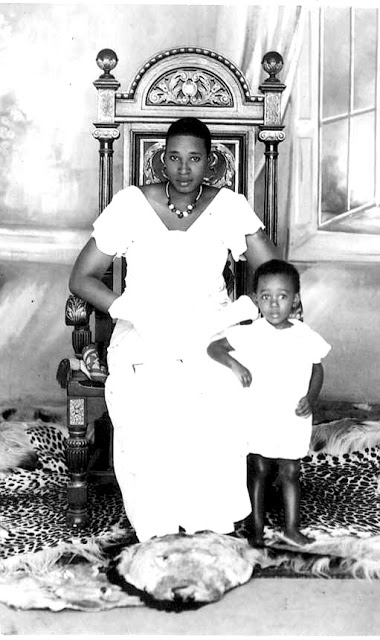
Young. Princess Elizabeth Bagaaya of Toro with her mother Lady
Kezia Rukidi Abwooli
|
|
Within and outside the kingdom, Princess Elizabeth's mesmerizing beauty was equaled only by her warmth of heart, and counterbalanced by her academic prowess. She excelled in her studies, which she started in Gayaza High School, a prestigious girls' boarding school in Buganda, continued at Sherborne School for Girls, a boarding school in England, where she was the only black student. '“A Princess of Toro is groomed, trained from childhood to be well educated, cultured and prepared for her ancestral regal role as the official sister (Batebe) of the future King”. The princess of Toro,'
|

Elizabeth of Toro in her youth
|
|
“So I stoically denied myself any sexual activity or emotional involvement with any man, leaving Cambridge a virgin...” ~Princess Elizabeth of Toro.
|
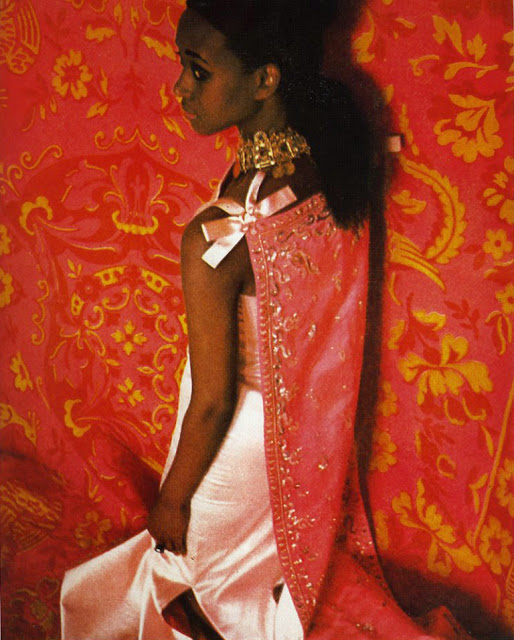
Princess Elizabeth of Toro in Vogue, 1967.
|
She wrote in her autobiography that 'I felt that I was on trial and that my failure to excel would reflect badly on the entire black race.' After one year (1959), she was accepted to the prestigious Cambridge University. She earned her place in history as being the third African woman to graduate from Cambridge in 1962 with a law degree. Amongst her tutors were E.M. Forster and F.R. Leavis, and her classmates included Germaine Greer and David Frost.
When not studying hard, Ms Bagaaya, not unlike the typical undergraduate, was partying hard because, she says, she was “in great demand”. Amongst the many smitten by our princess was Prince William of Gloucester, nephew of King George VI, who roamed about in a private jet. Like most royals, Ms Bagaaya serves up some cockiness. Before the prince, she dated a “tall, handsome, wealthy, sophisticated, and amusing Scot” who “entertained lavishly the rich and the beautiful. I was not rich.”
|
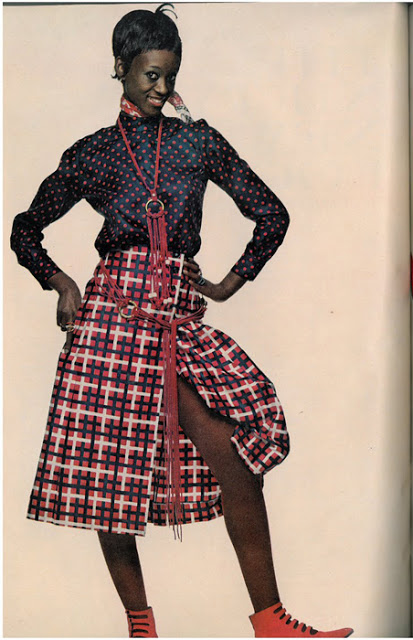
Princess Elizabeth of Toro
|
Hallelujah to that. But even as Ms Bagaaya went from party to party adorned in the “model gowns of the great houses of Paris”, she was conflicted about going all the way. She chose not to in order to protect her image and what it represented: the best of her not-permissive culture in which a public role awaited. “So I stoically denied myself any sexual activity or emotional involvement with any man, leaving Cambridge a virgin...” she writes.
Three years later, in 1965, Elizabeth Bagaaya became a Barrister-at-Law, becoming the first woman from East Africa to be admitted to the English Bar.
|

|
George Rukidi, the Omukama of the Toro Kingdom of Uganda, photographed with his daughter, Princess Elizabeth, after he had been created a Knights Bachelor by H.M. Queen Eliizabeth II at the Investiture
A pupilage followed in the chambers of Sir Dingle Foot – the UK solicitor-general and the man who would successfully represent Abu Mayanja, another Cambridge-trained lawyer, in Kampala in the famous sedition case of 1969. To celebrate her achievement, the princess hosted a gala party in London on December 20, 1965 “dressed in a pink silk Guy Larouche gown that contrasted with my dark skin and eyes...” In the morning, news came of her father’s death.
|
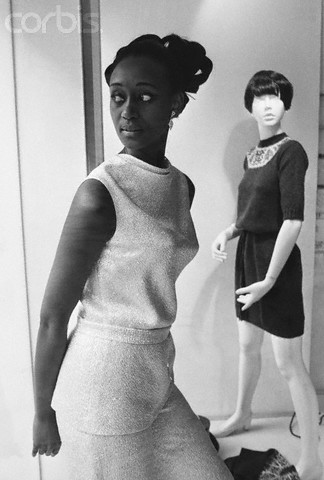
Fashion Model Princess Elizabeth of Toro February 1974.
|
|
Following the death of her father,King George Rukidi III and the accession to the Toro throne by her brother, Patrick David Matthew Koboyo Olimi III, the twelfth (12th) Omukama of Toro, who reigned from 1965 until 1995 King George Rukidi III, princess Elizabeth assumed her traditional role as Batebe (Princess Royal), which traditionally, made her the most powerful woman in Toro, and the most trusted adviser to her brother, King Patrick Olimi VII. Unfortunately, this was the beginning of the end of the glory days, a signal for tough times ahead.
|
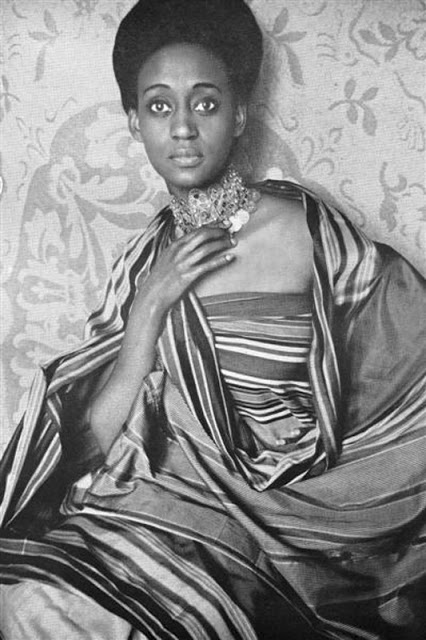
Elizabeth of Toro
|
|
The mid sixties were characterized by political upheaval in Uganda, and one of the victims were the kingdoms. King Fredrick Mutesa II of Buganda, another of Uganda's traditional kingdoms, was now the President, with his Prime Minister, Milton Obote. Barely one year after the coronation of the Omukama Olimi III, Obote attacked the Buganda Palace, sending Sir Edward Muteesa II in exile, and declared himself president. Soon he 'abolished' all Ugandan traditional kingdoms including Toro. Elizabeth was afraid for her brother's life, but he escaped to London.
|

Elizabeth poses for fashion editorial
|
|
Elizabeth later completed an internship at a law firm, and became Uganda's first female lawyer. Elizabeth was a virtual prisoner in her own country, until in 1967 she was introduced to modelling |

Elizabeth Princess of Toro, Charly Stember by Penn
|
'I will not do a nude. A princess is a princess.' ~ Princess Toro of Uganda
She was a big hit, and decided to ditch law for modelling. Her connections proved vital once more, as Jacqueline Kennedy Onassis, whom she’d met at a party, introduced her to the New York fashion scene, where her royal status catapulted her into the mainstream fashion titles. Her accidental hairstyle became the rage in black America as “the Elizabeth of Toro hairstyle.” The June 1969 edition of Vogue featured her in a four-page spread, and in November of the same year she made history in becoming the first black model to be photographed for the cover of Harper’s Bazaar.
|

First black model to be on the cover of Harper's Bazaar
|
|
Alas, this historic first cover was marred by the fact that Nyabongo had her face obscured by the magazine title’s logo. Nevertheless, she was inundated with offers of work, shooting with major fashion photographers Bill King and Irving Penn. She was even offered a large sum to pose nude, but she considered this a step too far for a woman of her position.
|

ELIZABETH OF TORO
|
|
Vogue
1969
|
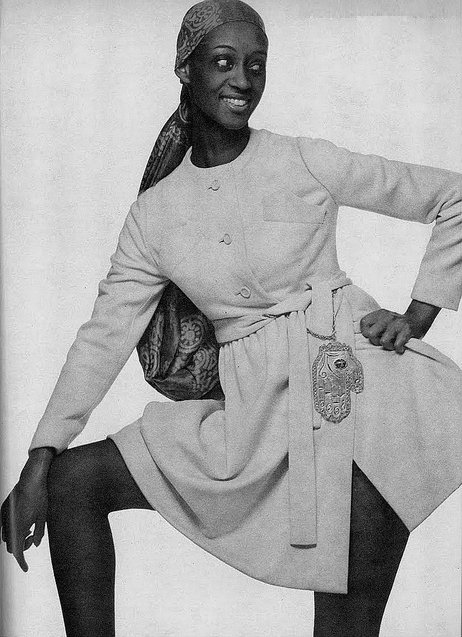
Elizabeth of Toro
|
'I embarked on a new career as an actress where I was asked by an American firm to play a role in a film titled 'Bullfrog in the Sun', which was based on Chinua Achebe’s “Things Fall Apart” and 'No Longer at Ease.' (a film based on igboland , a region of eastern Nigeria, meant to expose the impact of Western civilization on Africa)
She also starred in several motion pictures, including 'Sheena' and Chinua Achebe's 'Things Fall Apart and No Longer at Ease' in which she acted the leading female role. 'I was also featured in the film “Cotton Comes to Harlem.” and “Sheena”.While recently in Nigeria, I watched some Nollywood films and I was quite impressed with the story lines and good acting.'
|
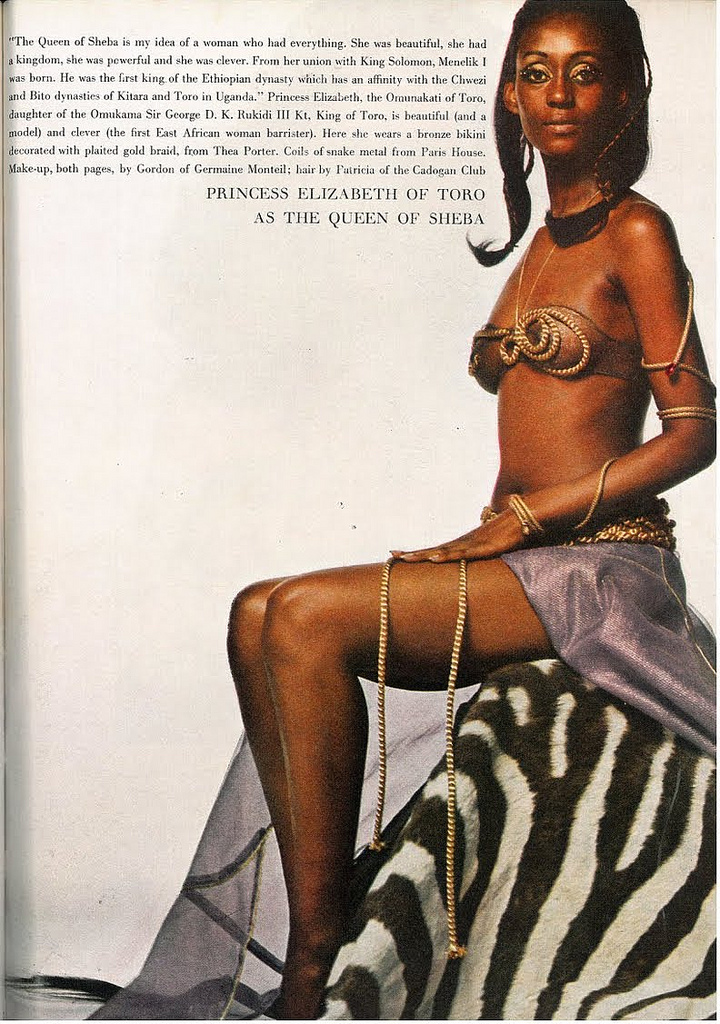
Elizabeth of Toro
|
|
In the end, Nyabongo had bigger ambitions than modelling, and so her career was short. She returned to Uganda in 1971, taking up a career in politics.
|

|
|
Elizabeth of Toro as Shaman in Sheena movie
|

|
|
Following the military coup of 1971, Princess Elizabeth was extended a special invitation to return and serve as Uganda's roving ambassador, in the government of Idi Amin. Later, she was appointed Uganda's ambassador to the United Nations. Her stint at the U.N. was short lived as she fell out of Amin's grace. What followed is a heart rending, sad story of humiliation and real danger to the princess and those close to her. She barely escaped with her life and went into exile in neighboring Kenya.
|

Elizabeth of Toro,1974, Manhattan, New York, New York, USA
United Nations: Former New York model Princess Elizabeth Bagaya, Foreign Minister of Uganda.
|
|
Princess Elizabeth returned to Uganda following the overthrow of Idi Amin's regime. The return of Milton Obote to Uganda, and his eventual assumption of power as president started yet another reign of terror in the newly liberated nation. The political and security situation proved too hostile for Princess Elizabeth and her lover, Prince Wilberforce Nyabongo, son of Prince Leo Sharp Ochaki, escaped to London in 1980, and married secretly in 1981. Our princess was happy. “I brushed his hair daily, washed his feet with warm water, and massaged his body,” she writes. When he said he would give anything to fly, the princess summoned her vast network of highly connected friends and had him learning to fly in no time. When Ms Bagaaya was being considered for a role in the film Sheena and Wilbur said he wanted the pilot’s bit, she made sure. And together they would rally support for the NRM in Africa and Europe.
|

Elizabeth at the hotel Plaza in NY
|
|
In 1986 Elizabeth was appointed ambassador to the United States, a job she held until 1988. Later that year Nyabongo, an aviation engineer/co-pilot, was killed in a plane crash in Casablanca at age 32 years. Following the death of her husband, Elizabeth opted to leave public service and get involved in charity work
|
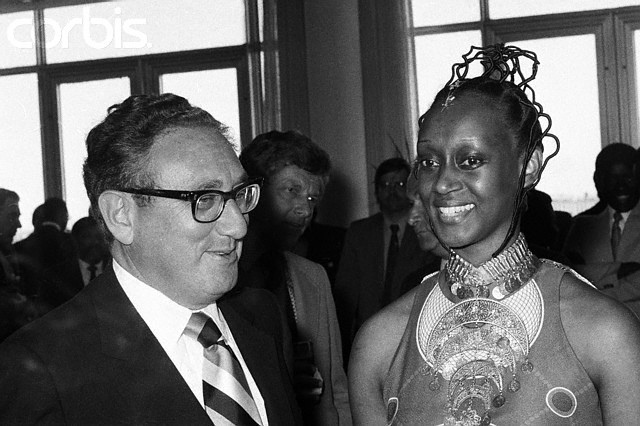
Elizabeth Toro,1974 --- Secretary of State Henry A. Kissinger chats with attractive Elizabeth Bagaaya, Foreign Minister of Uganda, during a luncheon hosted by Kissinger at the U.S.
|
|
The restoration of cultural leaders by President Museveni's government in 1993 beckoned Princess Bagaya to return and serve her people as Princess Royale to her brother, King Patrick Kaboyo Olimi VII. She was one of the key players in restarting the kingdom as most of the elders who knew all the rituals and protocol were dead or scattered all over the world. Upon the untimely death of King Olimi VII, she was named as one of the guardians to her nephew, the three-and-one half years old infant king, His Royal Highness Omukama Oyo Nyimba Kabamba Iguru Rukidi IV.
|

Elizabeth of Toro
|
|
She is, today, one of the key players in the kingdom reconstruction activities of The Batebe of Toro Foundation, to which she devotes most of her time. Following a period of service as Uganda's Ambassador to Germany and the Vatican, Princess Elizabeth accepted an appointment as Uganda's High Commissioner to Nigeria, based in Abuja, that country's capital.
|
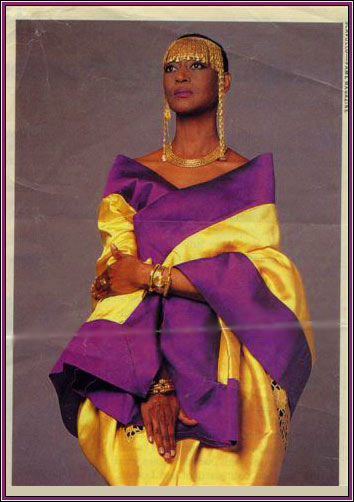
Portrait of Elizabeth of Toro in her full regalia
|
|
The story of Princess Elizabeth of Toro relates the highs and lows in the life of a living legend, a fairy tale princess. You may read it for yourself in her autobiography 'Elizabeth of Toro: The Odyssey of an African Princess', published by Simon and Shuster.
|

PRINCESS ELIZABETH BAGAAYA NYABONGO OF TORO
|
The Princess Who Stole The Heart Of The West
|
The Princess Who Stole The Heart Of The West
Meet the first woman from East Africa to be admitted to the English Bar, who went on to become the first black model to grace the front cover of the American VogueMagazine in 1968, and before then Harper's Bazaar magazine. She later became the foreign minister of Uganda in the 1970s, and addressed the UN General Assembly in 1974 as chairman of the OAU group. She is none other than Priness Elizabeth Bagaya of Toro, now 75, a woman who turned heads in her heyday. Curtis Abraham went to meet her.
/td> |
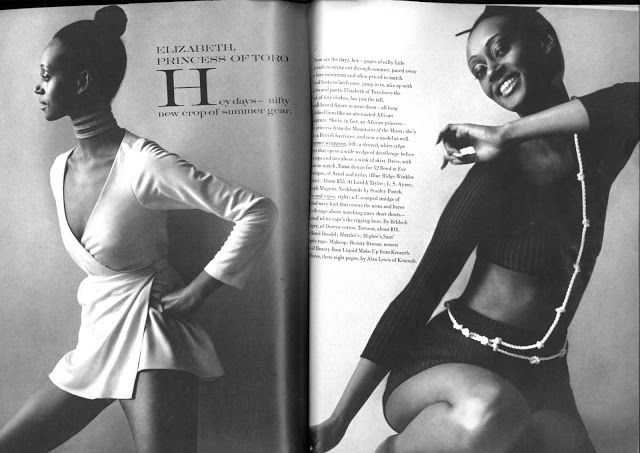
In late 1974, Princess Elizabeth Bagaya of Toro, as Uganda’s minister for foreign affairs, led a colourful delegation to the 29th session of the United Nations General Assembly. The occasion was to be one of her finest hours as a diplomat and a pan-Africanist.
Bagaya and her delegation travelled to New York aboard Idi Amin’s presidential jet, which had been a gift to the Ugandan president from the Israelis. In New York, the then US secretary of state, Henry Kissinger, gave a luncheon for all the African foreign ministers who were attending the UN session. Bagaya, as the elected chairman of the Organisation for African Unity (OAU) group, thanked Kissinger for his hospitality and for his peace building efforts in the Middle East and Indo-China, and then emphasised Africa’s agenda to Kissinger.
She explained to him and the other dignitaries that a radical new economic order, which would encompass fair trade among other issues, was needed if Africa was to achieve economic independence and poverty alleviation. Turning to South Africa, Bagaya told the gathering that “apartheid was a policy that was completely contrary to any civilised and humanitarian principles, and continued to make a mockery of African dignity and independence. So long as colonialism and imperialism continued, the world would continue to have human rights problems.”
|
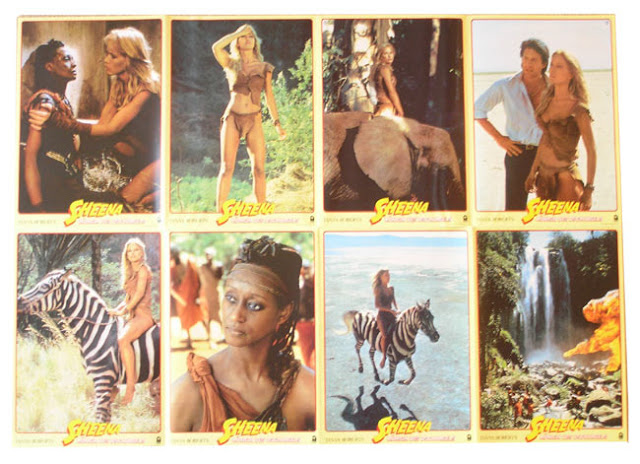
Sheena queen of Jungle Movie
|
She concluded her speech by asking “Kissinger to support the African liberation movements, and to visit Africa instead of depending on distorted reports about the African people and their societies”. A photograph of Bagaya at the podium of the United Nations General Assembly shows her wearing a stylishly long, narrow dress of gold Chinese brocade, a gift from the Chinese government, and her hair plaited into a crown.
The photograph also depicts a very beautiful African woman whose posture communicated a certain defiance of the Malcolm X variety; a defiance in line with the “black power” ideology. Her speech was critical of the West in every facet.
She pointed out the hypocrisy and vindictiveness of Britain and Israel – both countries undoubtedly helped Amin in the overthrow of former President Milton Obote – in blackening Uganda’s image abroad. Both countries, Bagaya pointed out, had convinced the IMF and the World Bank to stop financial relations with Uganda.
|

Elizabeth of Toro and a friend
|
When I first met the now 75-year-old Princess in early 2011, international politics was not on her mind – but culture. What is the role of traditional African culture in today’s society? Bagaya was pondering when we held an impromptu meeting in the colonial-esque lobby of the aptly named Grand Imperial Hotel in Kampala, the Ugandan capital.
BaToro culture has always been a source of strength and pride for Princess Bagaya – who holds the title of Batebe or “Princess Royal”, which traditionally makes her the most powerful woman in Toro (one of Uganda’s five kingdoms), and the most trusted adviser of the Omukama or BaToro King.
As a princess of the Toro Kingdom, duty to the monarchy was uncompromising and simply non-negotiable. This held true even during her brief career as an international fashion model and actress. During the late 1960s, the renowned Ford Modelling Agency in New York asked her to pose nude for a substantial sum of money. Bagaya staunchly refused.
|

Elizabeth of toro, when she was Ugandan Ambassador to UN
|
Are you a model or are you not,” a Ford Agency representative quizzed her over the telephone.“Yes, I am a model. But one day I will go back home,” Bagaya replied.
Growing up in the Toro Kingdom during the 1940s and 50s, Princess Bagaya had no illusions about the devastating impact the British colonial administration had on the monarchy and on its traditional cultural practices and beliefs.
“When Christian missionaries later banned the institution of blood brotherhood as cannibalistic and barbaric, they sliced through the moral fibre of our society,” Bagaya wrote in her 1988 autobiography “Elizabeth of Toro: The Odyssey of an African Princess”. “In pre-colonial times, betrayal of one’s country, clan, tribe, or neighbourhood was anathema. In the aftermath, betrayal became rampant.”
|

Elizabeth of Toro dances for the King
In spite of the near-cultural genocide in Toro by the British, Bagaya held no such bitterness when it came to individuals from the British Isles. During the early years there were a number of English expatriates who would have a profound influence during her formative years.
After finishing elementary school, she was sent to Gayaza High School, a prestigious female boarding school in Buganda, central Uganda. At school she was good at basketball mainly because of her height. She also excelled at singing and acting – she played Julius Caesar. She later attended Sherborne School for Girls in England where she was the only black student.
Bagaya was later admitted to Cambridge University (Girton College) as only the third African woman to go there – Olu Abisogom of Nigeria and Lulu Coker from Sierra Leone were the other two pioneers.
At Cambridge, she studied law, politics and history. She had a tight circle of notable friends there: Broadcast journalist Sir David Frost; Australian author, journalist and feminist Germaine Greer; Leon Brittan, home secretary in Margaret Thatcher’s government.
|

Elizabeth of Toro was United Nations ambassador from 1986 to 1988
This was the time of African independence, and London was a beehive of diplomatic activity. Bagaya met some of the architects of Africa’s liberation struggles. Always the socialite, Bagaya gave a cocktail party and dinner in honour of the visiting Jomo Kenyatta and Tom Mboya of Kenya.
Years later, during Bagaya’s brief imprisonment and later detention by Idi Amin, Jomo Kenyatta would come to her aid by personally telephoning Amin and telling him that no harm should come to someone whom he considered his daughter, and reminded the Ugandan president that one of Bagaya’s most successful missions as her country’s roving ambassador was to Kenya.
At the end of the conversation, Kenyatta threatened to break off diplomatic relations with Uganda if Bagaya was harmed in any way.
|
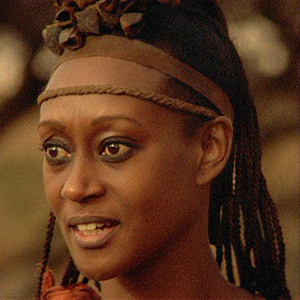
Beautiful Elizabeth as Sheena
Princess Bagaya graduated from Cambridge University in 1962 and in November 1965, she became a barrister-at-law, becoming the first woman from East Africa to be admitted to the English Bar. However, due to the untimely death of her father and the ascension to the throne of her brother, Rukirabasaija Patrick David Matthew Koboyo Olimi III, the 12th Omukama of Toro, Princess Bagaya returned home and joined Kazzora and Co, a law firm in Kampala where she completed a six-month internship before she was called to the Ugandan bar.
“I became the first African woman to do so, and to mark the occasion the then attorney general, Godfrey Binaisa, who later briefly became president, came to court unexpectedly and introduced me himself to the bar,” says Bagaya.
This was 1966 and the then Ugandan president, Milton Obote, had violently (at least in the case of the Kabaka or king of Buganda) abolished Uganda’s traditional monarchies. An unfair twist of fate as her brother Patrick had just assumed the Toro throne following the death of their father – Lieutenant Sir George David Matthew Kamurasi Rukidi III, the 11th Omukama of Toro.
|

Elizabeth the model
Bagaya’s own life was in serious jeopardy. So it was fortuitous that a personal invitation came from HRH Princess Margaret and her husband Lord Snowdon to participate in a widely publicised Commonwealth fashion show at Marlborough House in London. Princess Bagaya walked out on the stage with an outfit from a Uganda collection designed by Philippa Todd, a prominent member of the Makerere University’s Art Department.
“Princess Margaret looked pleased and led the applause as I strode on the stage, feeling proud and animated by the spirits of my ancestors.”
Bagaya was a fashion hit.
“A major consideration in making this decision was which career would be the most effective way of symbolising, projecting, and preserving the torch of my black culture,” says Bagaya. “Modelling was considered a rather frivolous thing to do, and I had a hard time convincing my friends and advisers that it would help me achieve my goals. Modelling was a means to an end for me, enabling me to make an important point regarding my beloved country. Beauty is not one’s own but rather a reflection of one’s people, one’s country. It is an asset one holds in trust. At that time, a black model appearing in top magazines was rare. I wanted to destroy the myth of white superiority in terms of beauty and sophistication.” Almost immediately British modelling agencies and fashion magazines were making overtures to her. Bagaya signed up with the Peter Lumley Agency – at the time the top agency in London.
She started high on the pay scale.
|

Elizabeth in London
|
According to her, black models were unusual in those heady days of the 1960s. And so with her new career came a host of influential friends – these included the Tory MP Sir Hugh Fraser. A noted enthusiast of African affairs, Fraser was married to the historian/author Lady Antonia Fraser.
It was Fraser who introduced Bagaya to William David Ormsby-Gore (Lord Harlech), a prominent Tory politician and diplomat, who served as British ambassador to the United States during the early to mid-1960s and was close friends with the Kennedy political clan.
During her years in London, she was photographed by David Bailey as the Queen of Sheba for the British edition of Vogue magazine. Patrick Lichfield, a British earl and cousin of Queen Elizabeth II, also photographed Bagaya for the American version of Vogue. Bagaya also featured on the cover of Harper’s Bazaar and Queen magazines.
“If I had chosen the path of law, I never would have been exposed to the people I met through modelling,” Bagaya reflected.
|
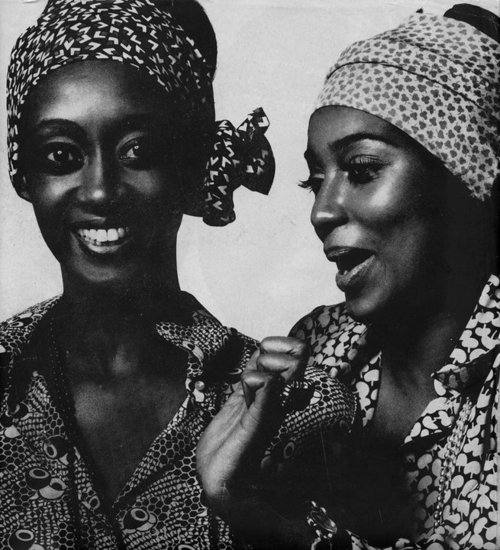
The legendary Princess Elizabeth of Toro, and Charlene Dash,1969 Harper’s BAZAAR.
|
Perhaps her most important friendship during this period was with Ballerina Dame Margot Fonteyn, whom Bagaya had met at Covent Garden with Rudolf Nureyev. It was Dame Fonteyn who introduced Bagaya to Jacqueline Kennedy, the wife of the then US president, John F. Kennedy. According to Bagaya it was Jacqueline Kennedy and Lord Harlech who got her onto the New York fashion scene.
“One morning, Lord Harlech had walked into the Lexington Avenue offices of American Vogue, much to the astonishment of its editor in chief, Diana Vreeland. Harlech’s standing in America was second only to [Winston] Churchill’s... It was Jacqueline who had arranged the interview between Lord Harlech and Diana Vreeland. He told her, ‘America loves beauty and the princess cannot fail,’ remembered Bagaya.
Not long after, Diana Vreeland issued a formal invitation to Bagaya to come to the US and model for Vogue. Vreeland, who “discovered” actress Lauren Bacall in the 1940s, was advisor to Jacqueline Kennedy in matters of style. The money was not the best but the magazine offered the ultimate exposure that any high fashion model on either side of the Atlantic would crave. It was a watershed in Bagaya’s modelling career.
|

A Glamtastic Flashback of Princess Elizabeth of Toro for Vogue 1970.
|
Her first photoshoot with Vogue was with an Italian photographer named Penati, who according to Bagaya was one of the premiere fashion photographers of his day in the USA. Not long after, the Elizabeth of Toro hairstyle, which was born during the Penati photoshoot, became the vogue among the African-American community. Vogue magazine would devote an entire layout to Bagaya in their 1968 summer issue – the first time a black model would be accorded such an honour.
Princess Bagaya eventually signed with the Ford Modelling Agency – the leading agency in America – and did photoshoots with Harper’s Bazaar, Life, Look and Ebony magazines. On one occasion, Bill King, a noted English photographer based in New York, photographed Bagaya but neglected to mention to her that she would be on the cover of Harper’s Bazaar. Bagaya would see the magazine at a Fifth Avenue newspaper stall when she went to buy the latest issues of Vogue and Harper’s Bazaar.
“My heart missed a beat as I stared down at the magazine in my hand and my face stared back up at me. Dumbfoundedly, I handed the vendor some money, and as he handed me change, he said, ‘congratulations!’ Dazed, I headed home. My phone had begun to ring incessantly with friends and colleagues who had seen the issue.”
|
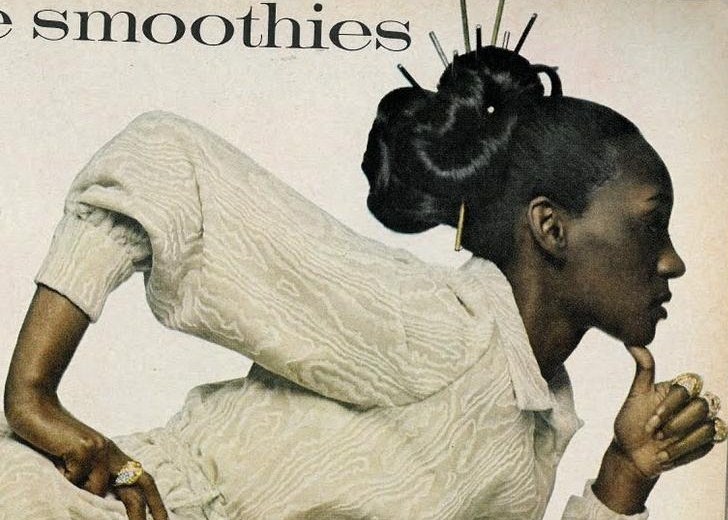
Princess Elizabeth of Toro. VOGUE 1969
|
It was the first time a top fashion magazine had featured a black model on its cover. The Ford Agency advised her to enrol in acting classes and so she did, with the American Place Theatre, and was taught by Wynn Handman, who is credited with the training of many outstanding US actors including Denzel Washington, Richard Gere, Michael Douglas, and others.
Bagaya eventually went on to act in a number of films, including the female lead in “Bullfrog in the Sun” based on Chinua Achebe’s two books: “Things Fall Apart” and “No Longer at Ease.”
|

Princess Elizabeth
|
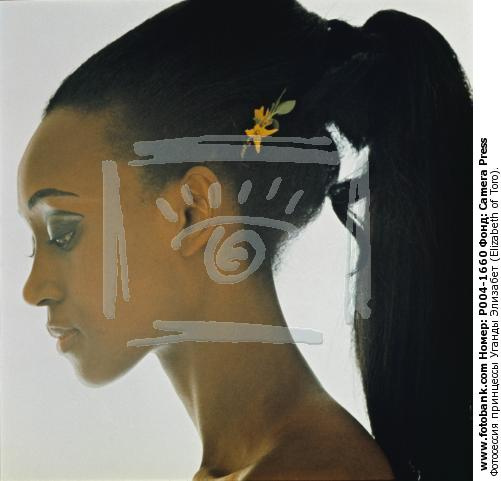
Princess Elizabeth
|
Bagaya, however, is perhaps best remembered for her role in Sheena: Queen of the Jungle, a 1984 Columbia Pictures film shot on location in Kenya. It was far from a box office hit (Bagaya herself thought little of the script and says that it was badly written).
“But for me, Sheena expressed a certain truth, a certain reality, namely, that an indigenous culture, a way of life of a people, had suffered an assault at the hands of an alien one,” Bagaya says in her autobiography. “The role of the Shaman, the defender of the indigenous culture in Sheena, had parallels with my own life and what had come to pass for Africa and our people.”
|
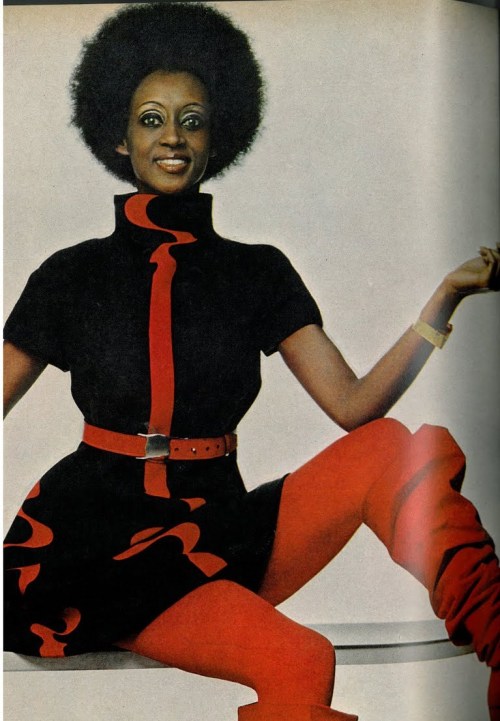
Princess Elizabeth of Toro for VOGUE circa 1969
|

Sheena, Elizabeth starred in the movie, his character was a Shaman
|
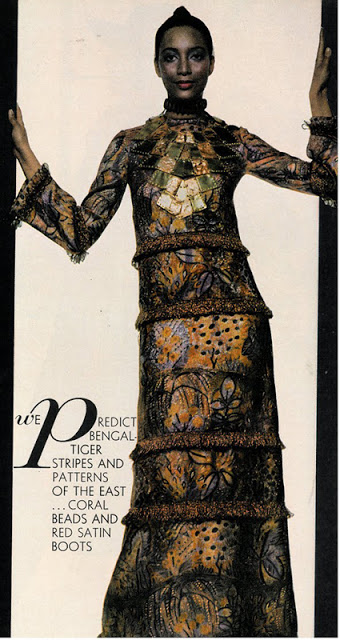
Princess Elizabeth of Toro
|
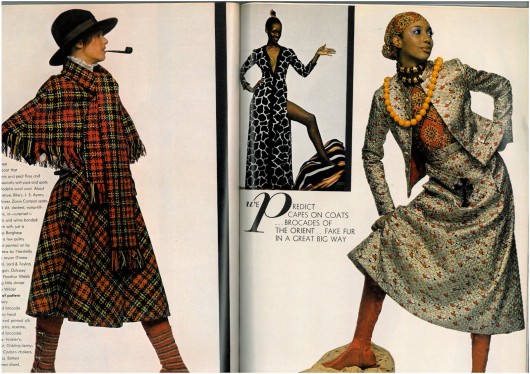
|

Princess Elizabeth
|
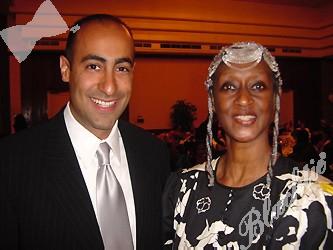
|
|
Golden Triangle developer Craig Nassi with Princess Elizabeth of Toro in Uganda, in Denver on a short mission
|
Article source:http://www.newafricanmagazine.com/features/culture/the-princess-who-stole-the-heart-of-the-west
Article source: https://kwekudee-tripdownmemorylane.blogspot.com/2012/10/princess-elizabeth-of-toro-first.html
|
| | | | | | | |
People: Princess Elizabeth Bagaya ... Princess Elizabeth Bagaya of the Kingdom of Toro, in Uganda
Elizabeth Bagaya – The Princess Who Stole The Heart Of The West
|
Open file 15350
|
Link to the source of this text
https://newafricanmagazine.com/news-analysis/lifestyle/culture/the-princess-who-stole-the-heart-of-the-west/
|
Open external link
|
People ... Princess Elizabeth Bagaya of Toro
Vintage Muse du Jour: Princess Elizabeth of Toro
|
Open file 15351
|
Link to Vintage Muse du Jour: Princess Elizabeth of Toro
http://www.messynessychic.com/2018/05/31/vintage-muse-du-jour-princess-elizabeth-of-toro/
|
Open external link
|
People ... Princess Elizabeth Bagaya of Toro
PRINCESS ELIZABETH OF TORO: THE FIRST AFRICAN AND ROYAL TO BE AN INTERNATIONAL SUPERMODEL
|
Open file 15352
|
Link to more material
https://kwekudee-tripdownmemorylane.blogspot.com/2012/10/princess-elizabeth-of-toro-first.html
|
Open esternal link
|
|
|
|

